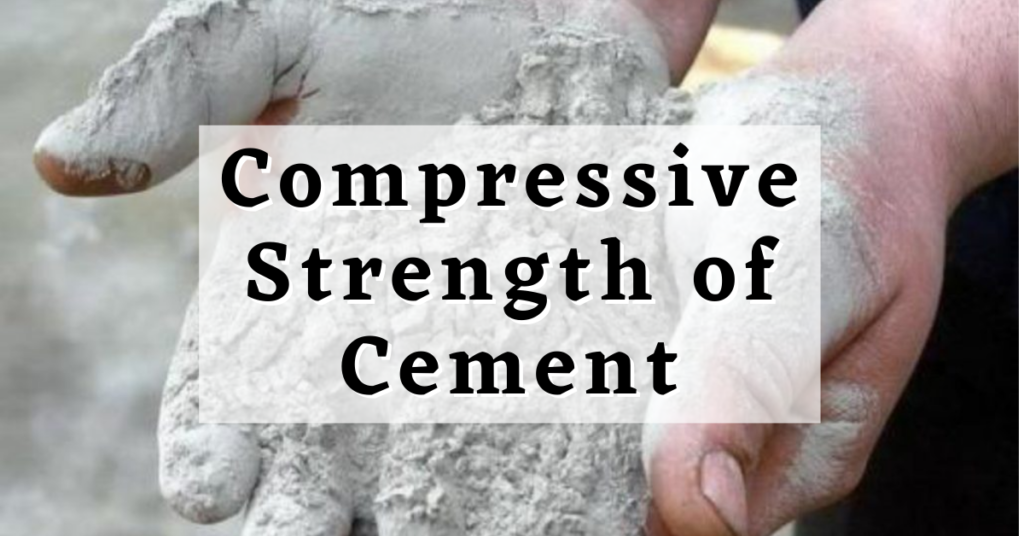Compressive Strength of Cement – Compressive strength is the material or structure’s ability to withstand or resist under stress. The Compressive strength of a material is determined by the ability of the material to resist failure in the form of cracks and fissure.
Crushing strength of Cement
This is nothing but compressive strength of cement mortar after 28 days of curing. This testing cube having 70.71 mm wide and surface area 50 cm².
Various tests to which cements must conform are laid down in national cement specifications to control the fineness, soundness, setting time, and strength of the cement. Compressive strength test of cement is listed below in turn.

Strength Test Of Cement
The impact force applied in this test (compressive strength test of cement) on both sides of the mortar specimen made from cement and the cumulative compression achieved without failure by the cement specimen.
The tests that measure the rate at which a cement develops strength are usually made on a mortar commonly composed of one part cement to three parts sand, by weight, mixed with a defined quantity of water. Tensile tests on briquettes, shaped like a figure eight thickened at the centre, were formerly used but have been replaced or supplemented by compressive tests on cubical specimens or transverse tests on prisms.
The American Society for Testing and Materials (ASTM) specification requires tensile tests on a 1:3 cement-sand mortar and compressive tests on a 1:2.75 mortar.
The British Standards Institution (BSI) gives as alternatives a compressive test on a 1:3 mortar or on a concrete specimen.
An international method issued by the International Organization for Standardization (ISO) requires a transverse test on a 1:3 cement-sand mortar prism, followed by a compressive test on the two halves of the prism that remain after it has been broken in bending.
Many European countries have adopted this method. In all these tests the size grading of the sand, and usually its source, is specified.
In the testing of most cements, a minimum strength at 3 and 7 days and sometimes 28 days is specified, but for rapid-hardening portland cement a test at 1 day also is sometimes required. For high-alumina cement, tests are required at 1 and 3 days.
Strength requirements laid down in different countries are not directly comparable because of the differences in test methods. In actual construction, to check the strength of a concrete, compressive tests are made on cylinders or cubes made from the concrete being placed.
Factors Affecting Strength of Cement
Factors affecting strength of cement are:
- Fineness of cement 10% resudue on 45 micron.
- Mixing ratio of Limestone
- Percentage of c3s 55 to 60% and c2s 25 to 30%
- Free lime percentage less than 1%
Compressive Strength Test Of Cement
1. Objective
The compressive strength of hardened cement is the most important of all the properties. It is not surprising therefore that the cement is often tested at the laboratory for its strength before the cement is used in important works. Strength tests are not made on neat cement paste because of difficulties of excessive shrinkage and subsequent cracking of neat cement.
2. General Requirements
Scope : The strength of cement is determined by compressive strength tests, on
100mm concrete cubes, or 70.7mm mortar cubes, made with specified coarse and
fine aggregates, in the case of the 100mm concrete cubes and specified sand in the
case of the 70.7 mortar cubes, mixed by a machine and compacted manually with a
compacting bar.
2.1 – Apparatus
- Standard Sand – Standard Sand to be used in the test shall conform to IS : 650-1966